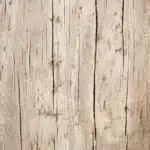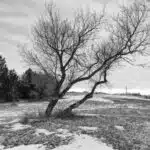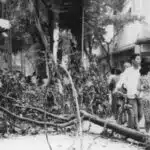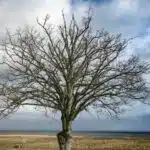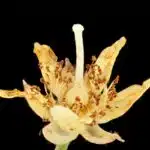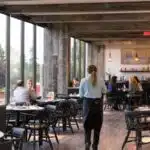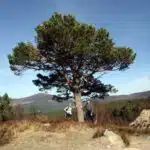As an arborist, it is crucial to be able to identify whether a tree is dead or alive. Trees play a significant role in our environment and provide numerous benefits, including purifying the air we breathe and providing shade. Dead trees, however, can pose a safety risk and become a hazard to people and property. Therefore, it is essential to know how to tell if a tree is dead.
There are various signs that indicate whether a tree is dead or dying. Some of these signs are visible on the trunk or branches while others may be hidden below the surface. In this article, we will discuss six signs that you should look for when trying to determine if a tree is dead or alive. By being able to recognize these signs, you can take appropriate action and ensure that your property remains safe and healthy.
No Leaves Or Signs Of Growth
Trees are an essential part of the environment, providing numerous benefits such as oxygen production and carbon dioxide absorption. Tree preservation is vital to maintaining ecological balance and reducing the environmental impact caused by deforestation. However, trees can die for a variety of reasons such as lack of water, pests, diseases, or physical damage. It is crucial to identify dead trees promptly to prevent potential hazards such as falling branches.
One way to tell if a tree is dead is by observing its leaves or signs of growth. If the tree does not have any leaves during the growing season or shows no signs of growth for two consecutive years, it may be dead. Leaves are critical in photosynthesis, which provides energy for plant growth processes. Without adequate sunlight and water uptake through roots, leaves cannot function correctly. Therefore, a lack of leaves or signs of growth suggests that the tree is not getting enough nutrients required for survival.
Another sign to look out for is brittle or cracked bark, which may indicate that the tree has died long ago. Bark provides protection against mechanical damage from external factors such as insects or animals and helps transport nutrients between different parts of the tree. When a tree dies, its bark loses elasticity and flexibility due to dehydration and fungal infection. As a result, it becomes more prone to cracking or breaking under pressure than healthy bark would normally withstand. Observing these characteristics can help determine whether a tree requires professional attention or removal if deemed hazardous to people or property nearby.
Brittle Or Cracked Bark
Like a protective shield, tree bark is one of the most important parts of a tree. It protects the living tissue underneath from outside damage and disease. However, when a tree’s bark becomes brittle or cracked, it can indicate that the tree is in trouble.
Bark preservation is crucial to maintaining the health of a tree. When a tree’s bark is damaged, whether due to environmental factors or human intervention, it can lead to serious problems such as insect infestations and diseases. To prevent these issues from arising, arborists use various techniques for preserving tree bark.
In managing bark diseases, early detection is key. Fungal infections are common culprits in causing cracks and fissures on a tree’s trunk and branches. As an arborist, it is important to identify these infections early on and take appropriate measures to prevent further damage. By implementing effective management strategies for bark diseases, we can help ensure that trees remain healthy and thrive for years to come.
Transition: While brittle or cracked bark may be an indicator of an unhealthy tree, fungal growth on the trunk or branches can be another sign that something may not be right with your beloved greenery.
Fungal Growth On Trunk Or Branches
Fungal growth on the trunk or branches of a tree is often a sign of decay and can be an indicator that the tree is dead or dying. Fungi can infect trees and cause them to rot from the inside, leaving them structurally weak and prone to breaking. Common fungi that can cause damage include bracket fungi, which grow in large, woody shelves on the bark of the tree, and slime molds, which appear as slimy masses on the surface of the trunk.
Prevention tips for fungal growth include keeping trees healthy by providing proper care such as watering and fertilizing regularly. Trees should also be pruned properly to remove any dead or diseased branches which may attract fungi. Additionally, avoid damaging the bark of trees through lawn mowers, weed whackers, or other tools.
Treatment options for fungal infections depend on the extent of damage to the tree. In some cases, removing infected branches may be enough to prevent further decay. However, if the infection has spread throughout much of the tree or there are hollow or rotten spots present, it may be necessary to remove the entire tree before it becomes a safety hazard.
Moving forward into our next section about ‘hollow or rotten spots’, it is important to understand how these areas can impact a tree’s health and safety.
Hollow Or Rotten Spots
Hollow spots in a tree can be identified by looking for cavities or concave areas in the trunk or branches. To further analyze the tree, a close examination of any rotten areas should be conducted to determine the extent of decay. Rotten areas may appear to be moist, discolored, or cracked, and can provide clues as to whether the tree can be salvaged or needs to be removed. In certain cases, an arborist may need to use a borescope or other instrument to examine the interior of the tree and confirm the presence of hollow or rotten spots.
Identifying Hollow Spots
As arborists, ensuring tree preservation and maintenance is crucial to our profession. Identifying hollow spots in trees is one important way to determine if a tree is dead or dying. Hollow spots occur when the inside of the tree decays, leaving empty spaces that can compromise the structural integrity of the tree.
To identify hollow spots in a tree, start by visually inspecting the trunk for any visible signs of decay, such as cracks or holes. Another method is to gently tap the trunk with a hammer or other tool and listen for a hollow sound. This indicates that there may be decay on the inside. A more advanced technique involves using an increment borer to take small samples from different parts of the tree and examining them for signs of decay.
It’s important to note that not all hollow spots mean that a tree is dead or dying. Some trees naturally develop cavities as they age and can still be healthy. However, if you notice multiple hollow spots or extensive decay, it’s best to consult with a professional arborist for further evaluation and potential tree preservation measures before it becomes too late.
Examining Rotten Areas
Identifying hollow or rotten spots in trees is a crucial task for arborists as it helps them determine the health of a tree. However, identifying the causes of rot and preventing tree decay can be equally important in maintaining the longevity of a tree. Rot can be caused by various factors such as fungi, bacteria, insects, and environmental stresses like drought or flooding.
To examine rotten areas in trees, arborists need to evaluate the extent of decay present in the tree. One way to do this is by using a probe or screwdriver to gently poke at the tree’s bark and wood. If there is resistance, it indicates that the area is still solid. Conversely, if the tool sinks into the wood with ease, it may indicate that there is decay present.
Preventing tree decay involves regular maintenance practices like pruning, watering, and fertilizing. It also includes identifying potential sources of stress on a tree such as improper planting techniques or construction damage. By addressing these issues early on and implementing proper preventive measures, arborists can help ensure that trees remain healthy and free from decay for longer periods.
Pest Infestations
As arborists, we understand that trees are living organisms that can be affected by various factors, including pest infestations. These pests can range from insects to mites and fungi, causing damage to the tree’s leaves, bark, and even roots. It’s essential to identify early signs of pest infestations to prevent further damage.
Preventative measures are key in managing pest infestations in trees. One way is through proper tree maintenance practices such as pruning dead or diseased branches and removing fallen fruit or leaves around the base of the tree. This reduces any potential habitats for pests to thrive. Another approach is natural pest control methods such as introducing beneficial insects like ladybugs or lacewings that prey on harmful ones.
While prevention is crucial, it’s also important to address existing pest infestations promptly. An arborist will typically evaluate the type and severity of the infestation before recommending treatment options such as insecticides or fungicides, depending on the situation. However, it’s essential to note that chemical control should only be used when necessary and under professional guidance.
Identifying and addressing pest infestations early on is critical in maintaining healthy trees. By taking preventative measures and implementing natural control methods, we can reduce the need for chemical treatments and promote sustainable tree care practices that benefit both the environment and our communities. In the next section, we will explore another common issue with trees – their leaning or unstable position – and how to manage it effectively.
Leaning Or Unstable Position
An unstable or leaning tree is a significant hazard, especially during extreme weather conditions. If you notice that your tree is leaning or has an unstable position, it is crucial to act quickly as the tree may pose a risk to people and property. An unsteady tree is usually a sign of root damage, disease, or insect infestation. Therefore, it’s essential to contact a professional arborist to assess the situation.
Preventative measures are essential in maintaining healthy trees and preventing them from becoming unstable or leaning. Proper pruning and trimming techniques can help remove weak branches, reduce wind resistance, and improve overall tree structure. Regularly inspecting your trees for signs of damage such as cracks, cavities, and decay will also help prevent further damage from occurring.
Safety precautions should be taken when dealing with an unstable or leaning tree. It’s best to avoid standing near the tree as the risk of falling branches or collapse increases significantly when the tree is under stress. In addition, do not attempt to remove the tree yourself as this can be dangerous without proper equipment and knowledge. Always seek assistance from a certified arborist who can safely handle the situation.
Transition into subsequent section: With proper care and maintenance, trees can live for many years. However, sometimes they may not respond to pruning or trimming measures despite all efforts taken by homeowners and arborists alike. When this happens, it may be time to consider other options such as removal or replacement of the tree.
No Response To Pruning Or Trimming
As arborists, we often encounter trees that do not respond well to pruning or trimming. This can be a sign of poor tree care or maintenance techniques in the past, which has led to a weakened tree that is unable to recover from pruning damage. When a tree does not respond to pruning or trimming, it is essential to identify the underlying cause and take appropriate action.
One reason why trees may not respond well to pruning or trimming is due to the timing of the pruning. If a tree is pruned during its dormant season, it will have fewer resources available for growth and repair. This can result in slow recovery or even death of the tree. Another possible cause is improper pruning techniques, such as removing too much foliage at once or cutting too close to the trunk.
To ensure proper tree care and maintenance techniques, it is crucial to hire qualified professionals who are trained in proper pruning methods and understand the biology of trees. By hiring an experienced arborist, you can ensure that your trees are pruned at the right time and in the correct manner. This will help your trees recover faster from any damage caused by pruning or trimming.
Proper tree care involves more than just pruning and trimming; it also includes regular inspections, fertilization, and pest control measures. In the next section, we will discuss another sign of a dead tree – discolored leaves or needles – and how it can be an indicator of poor tree health.
Discolored Leaves Or Needles
When it comes to tree care, understanding the signs of a sick or dying tree is crucial. One such sign is discolored leaves or needles. Discoloration can occur due to several factors, including environmental stressors, pests and diseases, and nutrient deficiencies.
One of the most common causes of discolored leaves is environmental stress. Trees that are exposed to extreme temperatures, drought, flooding, or pollution may develop yellowing or browning leaves. Pests and diseases can also cause discoloration. For example, spider mites can cause a stippling effect on leaves, while fungal infections can lead to brown spots or blotches. Finally, nutrient deficiencies can result in yellowing or stunted growth.
The good news is that many cases of discolored leaves are preventable with proper tree care techniques. Ensuring that your trees receive regular watering and fertilization can help prevent nutrient deficiencies and environmental stress. Additionally, practicing good pruning habits and promptly addressing any pest or disease issues can help keep your trees healthy and vibrant for years to come.
Cankers On Trunk Or Branches
Like a wound on a human body, cankers on the trunk or branches of a tree are serious injuries. They are areas of dead and damaged tissue that disrupt the flow of water and nutrients within the tree. Cankers appear as sunken, discolored, or swollen patches that may ooze sap or have fungal growths.
Preventing cankers is key to preserving the health of trees. Proper pruning techniques and sanitation practices can help prevent injuries that lead to canker formation. Avoiding mechanical damage from lawn mowers, weed trimmers, or construction equipment is also important. Providing good growing conditions including adequate water, nutrients, and light will help maintain a tree’s natural defenses against diseases and pests.
Treating cankers is difficult once they have formed because they cannot be cured. The best course of action is to remove infected branches or limbs before the infection spreads further into the tree. Disinfecting pruning tools between cuts with rubbing alcohol or bleach solutions helps prevent the spread of disease. In some cases, fungicidal treatments may slow down the progression of cankers but it is not guaranteed to save the tree from decline.
Transition: Although cankers on trunks or branches cause damage to trees, there is another sign that could indicate even more severe issues – no signs of sap flow.
No Signs Of Sap Flow
A lack of sap flow is a common indication that a tree may be dead. However, it is important to note that this isn’t always the case. Some trees may not produce sap due to several factors, such as seasonal changes or environmental stressors. It’s essential to understand these potential causes before making any conclusions.
One of the most common misconceptions about sap flow interruption is that it automatically means a tree is dead or dying. In reality, there are several reasons why a tree may not produce sap, including cold temperatures, drought, and disease. Additionally, some species of trees have naturally low sap flow rates. As arborists, we must consider all factors before diagnosing a tree with death solely based on the absence of sap.
Causes of sap flow interruption can vary depending on the species of the tree and its environment. For example, frost damage during winter months can cause significant harm to deciduous trees’ vascular systems and disrupt their ability to produce sap in the following spring season. Similarly, extended periods of drought can result in water stress and reduce overall plant growth and function. As experts in tree care and maintenance, we must evaluate each tree individually and determine if its lack of sap flow is truly indicative of its death.
Moving forward from examining possible causes for a lack of sap flow in trees, another crucial sign that indicates whether a tree is dead or not would be the presence or absence of decay or rotting smell emanating from it.
Decay Or Rotting Smell
No Signs of Sap Flow indicate a lack of movement of nutrients and water, which can be indicative of a dead tree. Another sign to look for is the presence of decay or rotting smell emanating from the tree trunk or branches. This is often caused by fungi or bacteria that break down the wood tissue, causing it to become weak and brittle.
Preventing decay is crucial in maintaining healthy trees. One way to do this is by pruning dead branches or limbs regularly. Deadwood provides a favorable habitat for pests and diseases, which can spread throughout the tree if left unchecked. Removing rot is also essential since it can weaken the structural integrity of the tree, making it more susceptible to wind damage or even collapse.
In addition to pruning, there are other ways to prevent decay and promote tree health. Proper watering, fertilization, and soil management practices can all contribute to keeping trees healthy. Regular inspections by a certified arborist can also help identify potential issues before they become severe. By taking proactive measures, homeowners can ensure that their trees remain healthy and beautiful for years to come.
Dead branches or limbs pose a significant risk as they can fall unexpectedly causing injury or property damage. In the next section, we will discuss how to identify these hazards and what steps should be taken when removing them safely.
Dead Branches Or Limbs
As an arborist or tree expert, it is important to recognize the signs of a dead tree. One such sign is the presence of dead branches or limbs. These can be identified by looking for branches that are brittle and dry, lacking in flexibility when bent. Dead branches are often a result of disease or insect infestation and can lead to further damage if not addressed promptly.
Pruning techniques can be used to remove dead branches and prevent further damage to the tree. When pruning, it is essential to use proper tools and techniques to avoid injuring the tree’s bark or causing additional damage. After pruning, it is recommended to clean and disinfect all tools to prevent the spread of disease between trees.
Disease prevention is critical in maintaining healthy trees and preventing the spread of infections. Arborists should regularly inspect trees for signs of disease and take appropriate measures as necessary. This may include removing diseased branches or applying fungicides to prevent further infection. By taking these preventative measures, arborists can help ensure healthy trees for years to come.
Moving forward, it is important to recognize that dead branches are just one sign of a dying tree. Another key indicator is a lack of flexibility in branches, which can be caused by various factors including decay or insect damage. In the next section, we will explore this topic further and provide insights into how arborists can address these issues effectively.
Lack Of Flexibility In Branches
Dead branches or limbs are a clear indicator of a tree’s health. However, there are other things to look for when determining if a tree is dead. One thing to consider is branch flexibility. Lack of flexibility in branches can be caused by several factors.
Branch flexibility is an essential characteristic of a healthy tree. It allows the tree to move with the wind and withstand heavy loads like snow or ice. Causes of rigidity in branches include age, disease, pests, and physical damage. As trees grow older, they become less flexible due to their woody nature. Disease and pests can also cause stiffness in branches by affecting the wood structure.
Tree anatomy and branch structure also play a crucial role in branch flexibility. The cambium layer, located just beneath the bark, produces new cells that allow the tree to grow and heal itself after injury or damage. Damage to this layer can result in rigid branches that do not bend or move with ease. A poor branching structure during growth can also lead to weak attachment points that may break easily during storms or high winds.
- A tree’s ability to flex its branches can be improved through proper pruning techniques.
- Regular inspections by an arborist can identify any issues with branch rigidity before they worsen.
- Providing adequate water and nutrients encourages healthy growth and improves branch flexibility.
In summary, lack of branch flexibility is a sign that a tree may be dead or unhealthy. Understanding the causes of rigidity allows for early identification of potential problems before they escalate into more significant issues like limb failure or death of the entire tree. By promoting proper pruning practices and regular inspections by an arborist, you can help ensure that your trees remain healthy for years to come while providing vital benefits such as shade and air purification.
As we move onto discussing signs of physical damage on trees, it is important to note that these signs may not always indicate death but rather stress on the tree’s health due to external factors.
Signs Of Physical Damage
Bark Damage is a clear sign of physical damage in trees; it can vary from small cracks to large pieces of bark being gone. Fungus growth is another sign of physical damage; it may be in the form of mushrooms or lichen on the bark. Broken branches are a sign that some sort of physical damage has occurred; these should be removed to reduce the risk of further damage. Leafless branches are another sign of physical damage; this can be the result of a severe insect infestation or a fungal disease. Leaf discoloration is another signal of physical damage; yellow or brown leaves may indicate a nutrient deficiency or an infection. Insect infestations are a common sign of physical damage to trees; woodpeckers and other birds may be present, indicating an infestation.
Bark Damage
Bark damage is one of the common signs of physical damage that can indicate a tree’s poor health. As an arborist, I have often come across trees with bark damage resulting from various causes such as mechanical injuries, environmental factors, and pests. Mechanical injuries may occur due to accidental cuts or gashes from lawn equipment. Environmental factors like frost cracks and sunscald can also cause bark damage. Additionally, pests like rodents and insects may bore into the bark, causing significant harm to the tree.
Prevention is always better than cure when it comes to bark damage in trees. To prevent mechanical injuries, it’s important to avoid mowing too close to the trunk of the tree or using sharp tools near it. Applying a protective barrier around the base of the tree can also help prevent mechanical injuries from landscaping equipment. To prevent environmental factors like sunscald and frost cracks, you can wrap the trunk of young trees with a protective material during winter months.
In conclusion, bark damage is a common sign of physical damage that can indicate poor health in trees. Arborists recommend taking preventative measures such as avoiding mechanical injuries and protecting young trees from environmental factors like sunscald and frost cracks. If you suspect your tree has experienced significant bark damage or any other physical injury, seek professional help to ensure appropriate treatment for its restoration and longevity.
Fungus Growth
Another common sign of physical damage in trees is the growth of fungi on the bark. Fungi can cause significant harm to trees, including rotting and decay. As an arborist, I have seen many cases where tree health has been compromised due to fungal growth.
Mushroom identification is crucial in determining the type of fungus affecting a tree. Some types of fungi are harmless, while others can be detrimental to tree health. If you notice mushroom growth on your tree’s trunk or branches, it’s essential to seek professional help from an arborist who can identify the type of fungus and recommend appropriate treatment.
Fungi removal techniques vary depending on the type and severity of fungal growth. In some cases, pruning infected branches may be necessary to prevent further spread of the fungus. Other times, fungicides may be applied to control or eliminate fungal growth. As with any physical damage to trees, prevention is always better than cure. Regular inspections by a certified arborist can help identify potential fungal growth before it becomes a severe problem for your tree’s health and longevity.
Broken Branches
Another sign of physical damage in trees is broken branches. Broken branches can be caused by several factors, including strong winds, heavy snow or ice buildup, and disease. As an arborist, I have seen many cases where broken branches have led to severe damage to trees and even injuries to people or property.
Pruning techniques are often used to prevent further damage from broken branches. Pruning involves removing the damaged or dead branch from the tree to prevent further spread of disease or decay. In some cases, pruning may also help improve the overall health and appearance of the tree. However, it’s important to note that pruning should only be done by a certified arborist who has the knowledge and experience necessary to ensure proper technique and safety.
Preventative measures can also be taken to minimize the risk of broken branches. Regular inspections by a certified arborist can help identify potential weak spots in trees before they become a problem. Proper maintenance, such as watering and fertilizing, can also help keep trees healthy and strong, reducing the likelihood of branch breakage during extreme weather conditions. By taking these preventative measures, homeowners can protect their property and ensure their trees remain healthy for years to come.
Professional Consultation And Removal Options
Tree assessment is a crucial step in determining the health of a tree, and it is best done by a professional arborist. A qualified arborist can assess the overall health of a tree by examining its roots, trunk, and branches. They can also check for signs of disease or pest infestation. A visual inspection may not be enough to determine the condition of the tree.
If you suspect that your tree is dead or dying, it is important to contact an arborist immediately. An expert will provide you with guidance on the best course of action, which may include removal or treatment options. Tree care services are available to help maintain healthy trees and prevent future damage to your property.
Removing a dead or dying tree can be dangerous and should only be performed by a professional. An experienced arborist has the necessary tools and equipment to safely remove the tree without causing damage to your property or injuring themselves. They also have knowledge of local regulations regarding tree removal and disposal. Investing in professional consultation and removal options can save you time, money, and potential hazards in the long run.
Conclusion
As certified arborists, it is our responsibility to assess the health and safety of trees on a regular basis. Identifying dead trees is crucial in preventing property damage and personal injury. By recognizing the signs of a dead tree, you can take necessary steps to remove it before it becomes a hazard.
The six common indicators of a dead tree are: lack of leaves or growth, brittle or cracked bark, fungal growth on trunk or branches, hollow or rotten spots, pest infestations, and dead branches or limbs. It is important to note that these signs do not always indicate a dead tree, as some may still have life left in them. However, if you notice multiple symptoms present in your tree, it may be time to consult with a professional for further assessment and removal options.
Remember, the safety of your property and those around it should always be your top priority when dealing with trees. As arborists, we encourage regular inspections and maintenance of all trees to ensure their longevity and prevent potential hazards. By staying vigilant and recognizing the signs of a dead tree early on, you can save yourself from costly damages and protect the beauty and health of your surrounding landscape.
Image Credits
- “Dead Tree” by Doug Scortegagna (featured)


